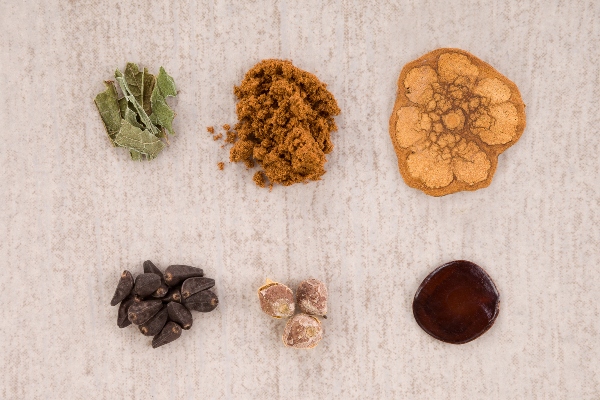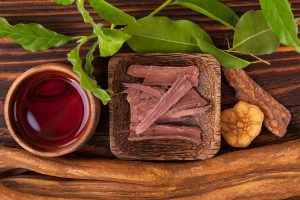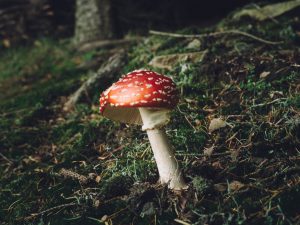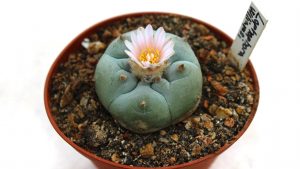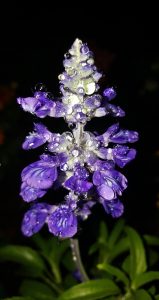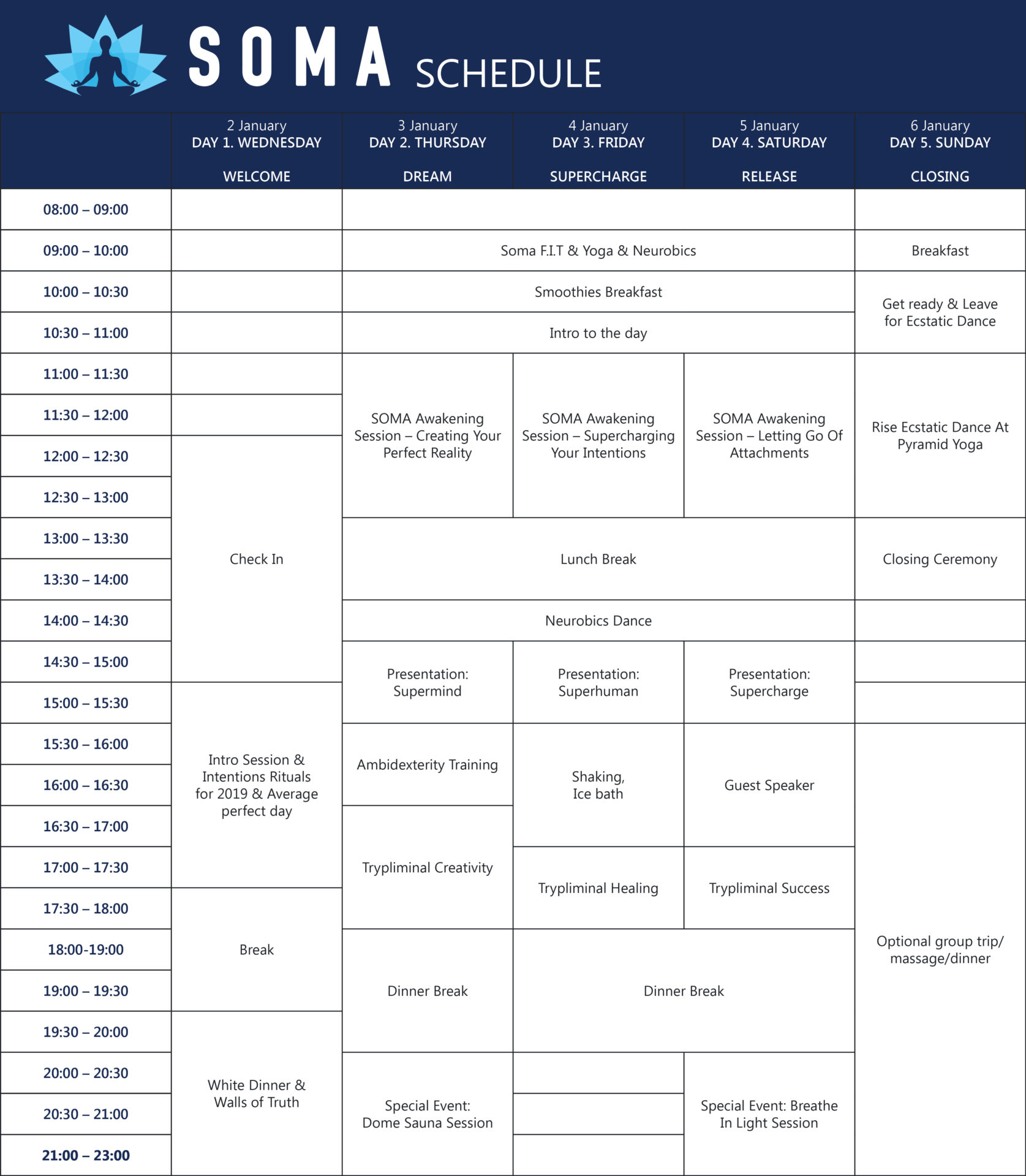The world is full of natural remedies that can treat physical conditions – plants with anti-inflammatory properties, roots that fight cancer, fermented foods that protect your gut. But some plant medicines carry an extra punch…
The first humans that came across psychedelic plant medicines might have experienced more than they bargained for! Eating some species of plants or fungi can induce a powerful psychedelic experience, sending the forager on a journey through completely trippy states of mind.
Psychedelic plant medicines have long been used for personal and spiritual growth – see EntheoNation’s plant medicine course for an extensive guide. Indigenous peoples all over the world have used psychedelic plant medicines as a core part of their healing practices, and many still do today.
Now, on the brink of a wave of psychedelic legalization, we can begin to understand the pharmacology of the ancient psychedelic plants that have been used for healing for thousands of years.
This article will explore four of the most popular psychedelic plant medicines in the world, and what their pharmacology can tell us about their potential to improve our lives.
What are Psychedelic Plant Medicines?
Psychedelic plants all produce a psychedelic “trip” once ingested. Most people experience changes in perception and thoughts; such as seeing bright colors and complex geometry, and feeling intense emotions or revisiting childhood memories.
Some psychedelic plants can just be eaten raw for their psychedelic effects to take hold… while others require precise preparation, such as mixture with other ingredients, to unleash their potential.
Of the many psychedelic plants that grow in the world, these are some of the most well known:
Ayahuasca
One of the most famous psychedelic plant medicines is ayahuasca. This is a brew created from the mixture of a number of different plants, but the most well-known version uses the Banisteriopsis caapi vine and Psychotria viridis leaf. The combination of these two plants produces a unique psychedelic experience, lasting several hours, and it is used for many healing purposes by Amazonian peoples.
The psychoactive component in P. viridis, DMT (dimethyltryptamine), is not normally active when you ingest it orally. However, the combination with B. caapi in a typical ayahuasca brew produces a unique pharmacology that prevents DMT being broken down by your stomach enzymes. This allows DMT to reach your brain and causes a psychedelic trip that can be used for mental healing.
Traditional ayahuasca use involves an experienced and highly trained shaman diagnosing your spiritual or physical ailments, and crafting a healing ceremony to address your problems. They might request you to follow a special diet involving abstinence from certain foods, sex, and digital media, in the days leading up to the ceremony.
During an ayahuasca ceremony, the shaman may use medicine music (icaros), work with spiritual energies, or simply reassure the participant to guide them through the experience and facilitate their healing.
Magic Mushrooms
Other plant medicines don’t require any mixture or preparation. Magic mushrooms (although technically a fungus, not a plant) are probably one of the most widespread psychedelic plant medicines in the world. You can find them growing on almost every continent, in damp wooded areas. They have been used by indigenous peoples for centuries.
Some evidence suggests that magic mushrooms were used by indigenous Australian peoples over 12,000 years ago. Aztec and Mayan art was heavily influenced by magic mushrooms, and priests used them in divination and healing. They are still used traditionally by many Mexican groups, and one unique species of psychedelic mushroom is an integral part of several branches of Siberian shamanism.
Magic mushrooms contain the psychoactive substances psilocybin and psilocin. There are over 200 species of magic mushrooms that contain these substances. These psychedelic mushrooms can be eaten fresh or dried, or brewed into tea, to induce an experience lasting a few hours.
Peyote and San Pedro
Peyote and San Pedro are two types of psychedelic cactus that have been used in healing ceremonies for thousands of years. They were among the first psychedelic plant medicines to be introduced to North America, and are still used in sacred healing practices today.
They both contain the psychedelic substance mescaline, and are usually prepared by boiling pieces of cactus in a tea. The cactus can also be eaten fresh.
The traditional use of these psychedelic cacti was thought to originate in a number of indigenous North American peoples, around Mexico and Texas. It has been used traditionally as a treatment for pain and physical ailments, but its ceremonial use has now evolved to focus on the treatment of addiction and spiritual issues.
San Pedro grows much faster than peyote, and as such people recommend using San Pedro over peyote due to sustainability concerns.
Salvia
Salvia divinorum, known colloquially as Salvia, is a plant that contains the world’s most potent naturally-occurring psychedelic. It has been grown by Mazatec shamans for countless generations, and relatively small doses hold great healing potential.
Salvia contains the psychedelic substance Salvinorin A, and only micrograms of it are required to have a psychedelic effect in people. It binds to only one type of receptor, which is very rare for natural psychedelic plants – and ingesting it results in a very unusual and disorienting experience.
Traditionally, the leaves of the Salvia plant are either chewed raw, or brewed into a tea. In contemporary western use, it is most commonly smoked in highly-concentrated extracts, producing an intense but very short psychedelic experience lasting only a few minutes.
Shamans use it to treat physical ailments, and consider it a route to connect with spirits or deities. Due to Christian colonial influences, one of its traditional names is Ska Maria Pastora, meaning “The leaves of [Saint] Mary the Shepherdess.”
How do psychedelic plant medicines work?
Psychedelics all cause a profound change in consciousness (when taken at a high enough dose). This change in consciousness, alongside their pharmacological properties, has been shown to be a potential treatment for conditions such as depression, addiction, and anxiety.
Different psychedelic plants work differently, but we’re starting to understand more about the root of their healing effects.
The Serotonin System
Ayahuasca, magic mushrooms, peyote and San Pedro all contain psychedelic chemicals known as “classic” psychedelics. They all work mainly through activation of serotonin receptors in the brain.
The increase in serotonin that these psychedelic plants can cause is thought to be the route of their effects on perception – such as visual hallucinations and changes in thoughts. Serotonin is also considered the main neurochemical route of treatments of depression, and that could be why these substances have so much antidepressant potential.
Both ayahuasca and magic mushrooms have been studied in extensive clinical trials showing that a single dose of these substances can have significant and lasting antidepressant effects in people suffering from severe depression.
Although peyote and San Pedro have not been studied as extensively, it’s likely they would have similar antidepressant effects. Their key psychedelic component, mescaline, also activates serotonin receptors in a very similar way to ayahuasca and magic mushrooms.
We don’t know why the activation of the serotonin system in the brain can fight depression – but most contemporary antidepressant medications also boost serotonin levels, suggesting that it’s an effective way to treat the condition.
The kappa opioid system
Salvia contains a unique psychedelic substance that activates only one very specific receptor in the brain, and its pharmacology suggests that it could be a powerful anti-addictive medicine.
Salvinorin A, the main psychoactive substance in Salvia, activates the kappa opioid receptor (KOR). Although this is an opioid receptor, it actually carries out a role you might not expect – it helps prevent addiction.
Studies have shown that if you activate the KOR in lab rats at the same time as giving them access to unlimited quantities of cocaine, the rats are less likely to show addictive behaviors.
These findings have given researchers hope that Salvia could help them develop an anti-addiction medication – one that could not only help people go through withdrawal, but also prevent addiction to highly dependent substances like cocaine or heroin.
Studies have also shown that Salvia could be an effective painkiller. Mice who are given Salvinorin A are less likely to experience discomfort when sitting on a steadily warming surface. The prospect of developing a non-addictive painkiller is very exciting for sufferers of chronic pain.
Scientists are attempting to develop chemical analogues of Salvia that could fight addiction or pain without causing you to trip!
The Mystical Experience
Although we’re learning more about the pharmacology of these healing plants, their unique effects on the mind sets them apart from other natural remedies. People describe having intense mystical experiences with these plants, that give them a fresh perspective on life. The intensity of the psychedelic experience has been directly linked to the healing benefits of these plant medicines – so there’s possibly more than just chemistry happening behind the scenes.
In studies on depression and tobacco addiction, where magic mushrooms have been used to effectively treat these health conditions, researchers found that the people who reported the most mystical experiences were also more likely to be healed.
A mystical experience is considered a state of mind that is very hard to describe – and involves a sense of realization or awakening, an encounter with some kind of universal truth or entity, and a sense of interconnectedness or timelessness. People often report mystical experiences giving them a fresh perspective on life, helping to give them new purpose or motivation to make positive changes.
So how can we make the mystical experience happen?
Unfortunately there’s no simple answer. We can’t directly link the mystical experience to pharmacology – some people have a mystical experience on very low doses of psychedelic plants, while others need very high doses! It can also arise spontaneously without the input of any substance whatsoever.
It seems as if the combination of psychedelic plants with holistic practices such as meditation, journaling, introspection, prayer, yoga or outdoor exercise is most likely to produce a mystical experience. Like the attainment of enlightenment through meditation, achieving a true mystical experience probably requires practice and patience.
How can you use psychedelic plant medicines?
There are many ways to use psychedelic medicines in your life – and you don’t even have to trip if you don’t want to.
Although the healing benefits of psychedelic plants have been discovered during high-dose experiences, it’s also possible to use tiny doses in your daily life to gain some of the positives too.
Additionally, there are a number of holistic practices you can use to amplify the benefits of a single psychedelic experience, potentially making one trip all you need to significantly change your life.
In the next part of this series, we will explain the easiest ways to use the healing benefits of psychedelic plant medicines while staying as safe as possible. Stay tuned!
Guest Post by Patrick Smith – Originally Published on The Renegade Pharmacist Blog
Patrick Smith is a writer and biologist who has worked in the psychedelic community for several years. He writes about the scientific and cultural aspects of psychedelic plants for the educational platform EntheoNation.
